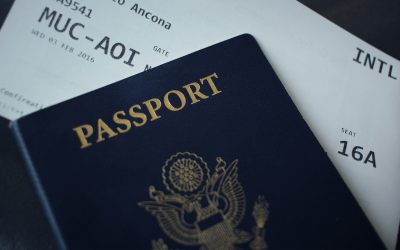Are you thinking about relocating to the Portuguese island paradise of Madeira? Whether planning a short visit or setting up a new life under the Atlantic sun, understanding the Schengen Area is key. It’s more than just a European travel zone — it’s a gateway to border-free movement, streamlined visas, and simplified travel for expats, tourists, and business travellers alike.
Here’s everything you need to know about the Schengen Area, from visa rules and travel perks to upcoming changes that could affect your journey.
What Is the Schengen Area?
The Schengen Area is the world’s largest zone, allowing free movement across borders without internal border checks. It was established through the Schengen Agreement signed in 1985, named after the village of Schengen in Luxembourg, where the pact was born.
Today, the Schengen Area includes 29 countries, covering over 4 million square kilometres and home to over 420 million people. It includes most EU countries and non-EU members like Iceland, Norway, Switzerland, and Liechtenstein. As of January 2025, Romania and Bulgaria are also fully integrated.
Fun fact for Madeira newcomers: While Portugal is part of the Schengen Area, Madeira — as an autonomous region — benefits from all the travel freedoms the agreement offers. That makes it a smooth gateway to mainland Europe and beyond.
Visa-Free Travel and the 90/180 Rule
One of the biggest perks of the Schengen Area for expats and tourists is visa-free travel. Suppose you’re a citizen of a Schengen or EU country or a national of one of about 60 visa-exempt countries (like Australia, the UK, the U.S., Canada, and Japan). In that case, you can travel throughout the Schengen Area for up to 90 days within any 180 days without a visa.
Need help to calculate your days?
The 90/180 rule can be tricky. It’s not based on fixed calendar periods. Instead:
- Your 90 days are counted backwards from today over the previous 180 days.
- Stays are cumulative across all Schengen countries.
- Overstaying can lead to fines, deportation, or entry bans.
The European Commission provides a handy calculator to help you stay within limits — a must-use tool for bouncing between Madeira, mainland Portugal, and the rest of Europe.
Do You Need a Schengen Visa?
You’ll need a Schengen visa if you’re not eligible for visa-free entry or planning to stay longer than 90 days. This single Schengen visa allows eligible passport holders entry and travel across all Schengen countries, making it a convenient option for extended European visits to multiple countries.
Types of Visa at a Glance:
- Type C (Short-Stay): Up to 90 days for tourism, business, or visiting family.
- Multiple Entry Visa: Ideal for frequent travellers.
- Type D (National Visa): For stays over 90 days — often used for study, work, or relocation.
- Type A (Airport Transit): Required for travellers of certain nationalities transiting through a Schengen airport.
Applying for a Schengen Visa
To apply, you generally need:
- A completed application form
- A valid passport
- Recent passport-sized photos
- Proof of travel itinerary and accommodation
- Travel Insurance
- Financial documentation (bank statements or sponsorship)
Apply at the country’s consulate where you’ll spend the most time — or the one you enter first if travel time is equal across destinations.
Processing typically takes 15 days, though it can vary by country or season. You can apply up to 6 months in advance and no later than 15 days before your trip.
New Systems Coming: EES and ETIAS
✦ EES (Entry/Exit System) – Expected October 2025
The EES will digitally track non-EU nationals entering and exiting the Schengen Area. On your first visit, you’ll provide biometric data (fingerprints and photos) at the border. Returning travellers will only need one of the two if within 3 years of registration.
Expect slightly longer queues at first but smoother travel later, thanks to improved efficiency and border security.
✦ ETIAS (European Travel Information and Authorization System) – Expected Late 2026
ETIAS will be mandatory for visa-exempt nationals (like Australians, Americans, and Brits) travelling to Schengen countries. It’s not a visa but rather a pre-screening travel authorization. Applications will be done online and should be processed within minutes.
Heads up: ETIAS isn’t live yet — beware of scam websites claiming otherwise.
Schengen Benefits for Expats in Madeira
Living in Madeira means:
- Effortless travel across Europe with no internal border checks
- Access to the entire Schengen Area with just one visa
- Reliable security cooperation across countries
- Economic and cultural integration with the broader EU
Whether hopping from Funchal to Frankfurt, attending conferences in Lisbon, or taking weekend trips across Europe, the Schengen framework makes it all easier and faster.
Final Tips for Expats & Travelers
- Always travel with a passport valid for at least 3 months beyond your planned departure.
- When you first arrive, get a clear entry stamp — missing stamps could create legal trouble.
- If you hold dual nationality, check Schengen rules for both passports.
- Check if your country requires registration on arrival at specific destinations.
Schengen Area: Wrapping Up
The Schengen Area isn’t just about open borders — it’s about open opportunities. Whether visiting Madeira for a few months or settling in for the long haul, understanding how Schengen rules work will save you time, stress, and possibly even fines. With upcoming systems like EES and ETIAS enhancing security and efficiency, now’s the perfect time to explore everything the Schengen zone offers.
Ready to make Madeira your new base? Our team is ready to help. The rest of Europe is just a short, seamless trip away.
The founding of Madeira Corporate Services dates back to 1996. MCS started as a corporate service provider in the Madeira International Business Center and rapidly became a leading management company… Read more




